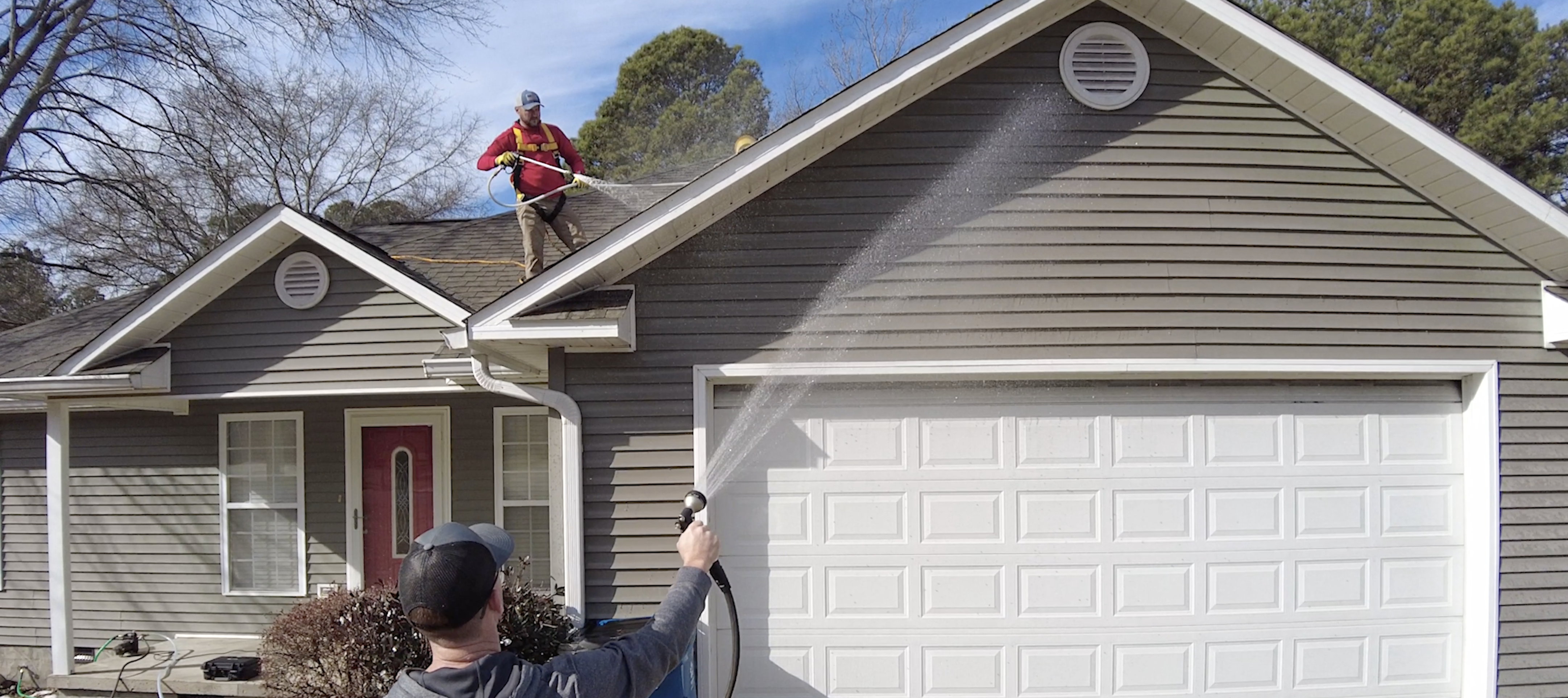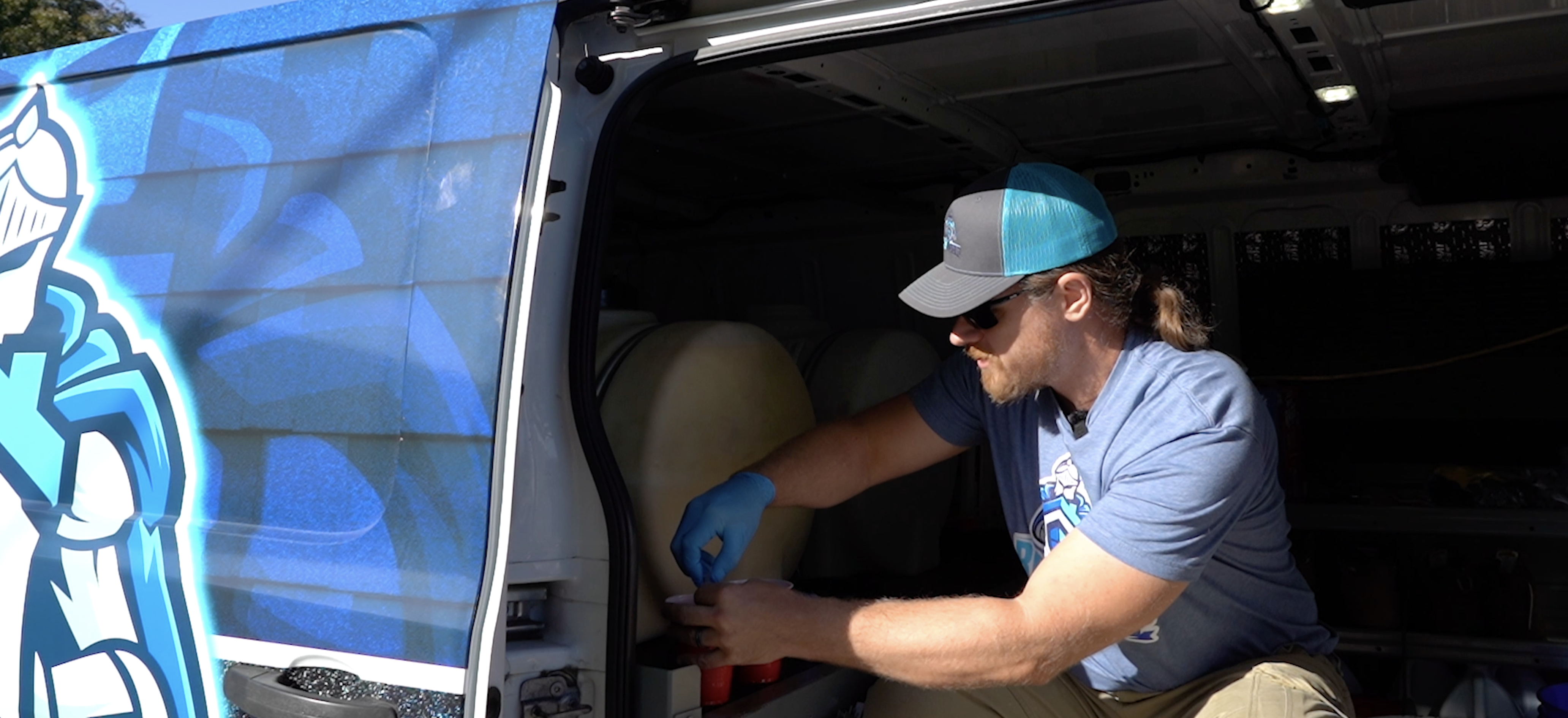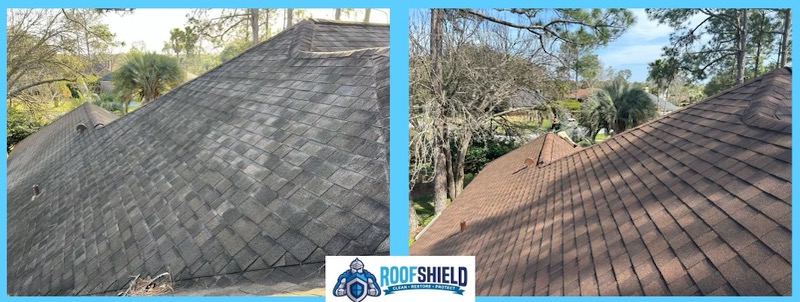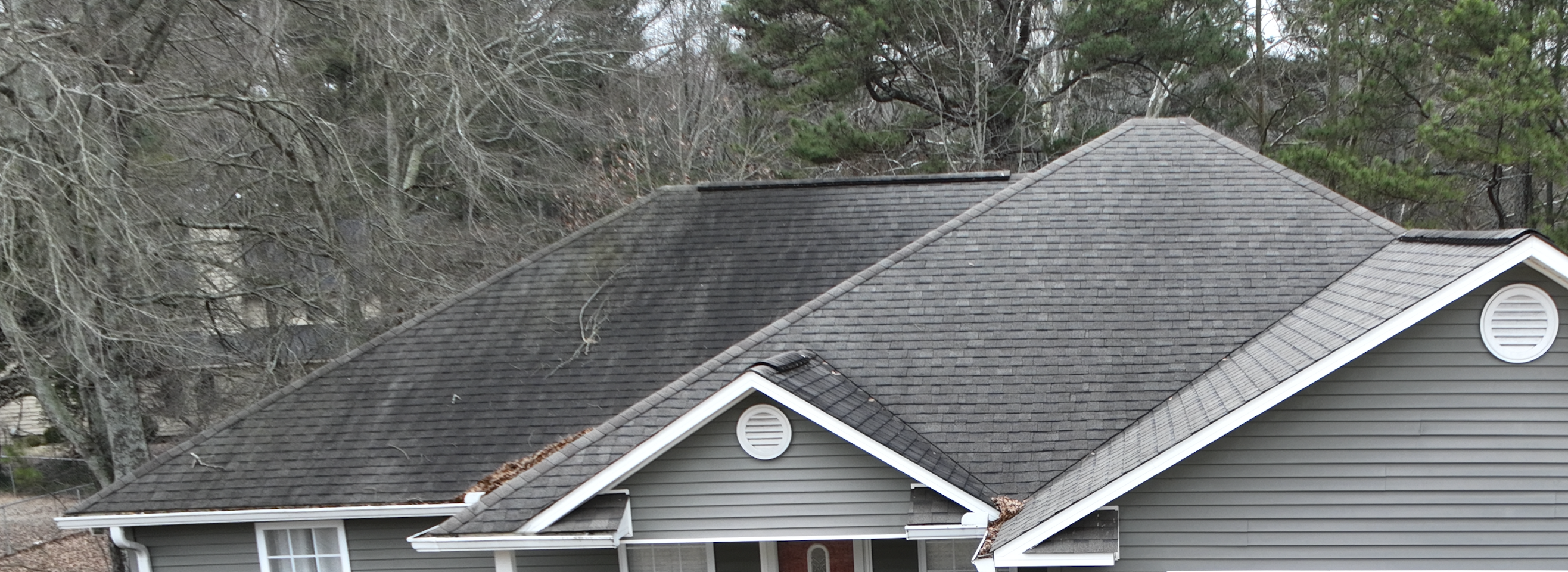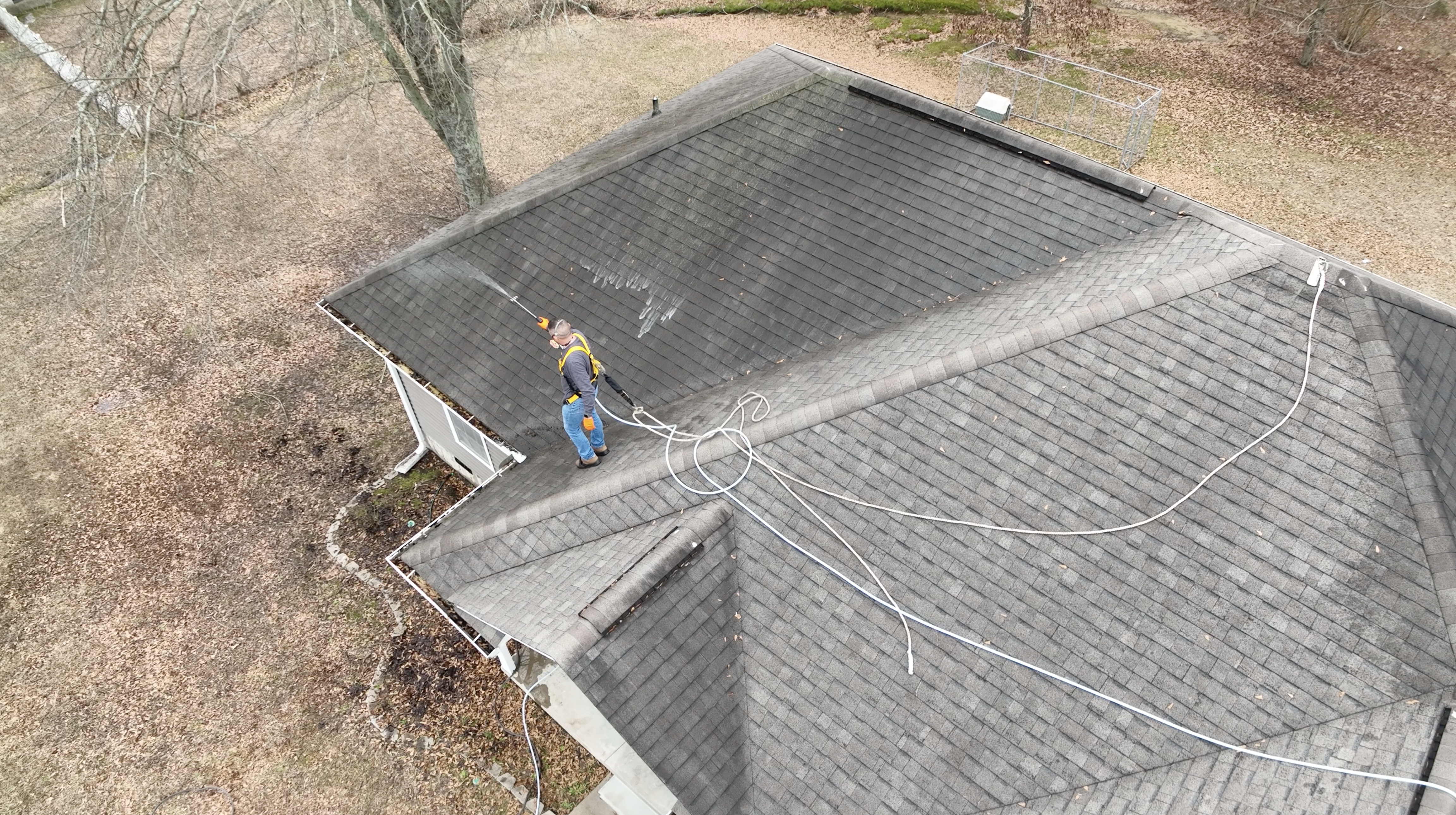Safety in the roof rejuvenation space comes in two main categories and is often overlooked by roofers, soft washers, and exterior cleaners. For instance, when did you last see a roofing contractor wear fall protection harnesses while working on a roof? Or how many times have you seen a soft washer or exterior cleaner working with sodium hypochlorite without proper respiratory protection?
Unfortunately, lack of proper Personal Protection Equipment, or PPE, is the norm in most production environments. To change that, we incorporate safety as one of the foundations of the Roof Shield Academy.
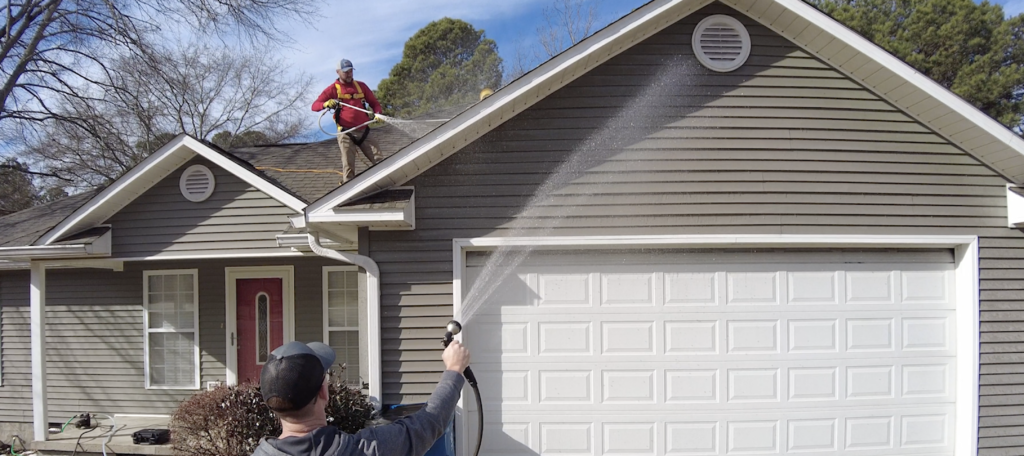
Advantages of Fall Protection Safety Training
Safety training and adherence to safety protocols are vital to a successful soft washing and roof rejuvenation business for several reasons. The first and most obvious is proper fall protection. Without fall protection, businesses run the risk of financial and physical loss. Financially, OSHA, or the Occupational Safety and Health Administration, has strict guidelines to ensure the proper and safe approach to roof work. Ignoring these guidelines can often result in substantial fines that many smaller companies cannot afford.
Physically, injury and death are likely results of accidents at height without proper fall protection. These types of incidents affect a business beyond financially, although the financial burden is amplified greatly when compared to a fine only. Physical incidents can also affect the homeowner.
With this in mind, Roof Shield Academy teaches a full suite of methods to ascend, descend, and work on roof systems at height using OSHA-approved methods and techniques. Specifically, ascending and descending the roof with the RidgePro system, properly fitting a harness, and then anchoring the harnessed workers to the roof during application. This is something all certified Roof Shield applicators learn in the classroom and adhere to in the field.
Sodium Hypochlorite Safety
Educating others on proper respiratory safety when handling and applying Sodium Hypochlorite to clean roof systems is one of my personal vigils. In short, I see way too many soft washers applying Sodium Hypochlorite, or SH, without proper protection.
If you remember from the previous post on Why Soft Washers Should Test the Strength of Sodium Hypochlorite, SH is reactive and will react with organic material. Lungs just so happen to be organic material. Initially, and often experienced by those new to soft washing, exposure to SH will cause minor irritation to the back of the throat. This will generally be short-lived, but repeated exposure will lead to the development of scar tissue in the throat and lungs and, eventually, long-term breathing issues.
To properly clean roofs with Sodium Hypochlorite, applicators must wear proper respiratory protection in the form of an organic vapor respirator or mask. These are the masks labeled OV (Organic Vapor). Masks such as the common N95 will not filter out the vapors from Sodium Hypochlorite. Fortunately, this is a lesson most new soft washers only need to learn once.
Bonus Tip: Wear Eye Protection Always when Applying Sodium Hypochlorite
This shouldn’t need mentioning, but again, the number of soft washers spraying chemicals without eye protection is mind-boggling. SH spraying back into the face and SH overspray are constant hazards during soft washing and roof cleaning.
In addition to carrying a portable eye wash station, applicators should always wear eye protection when on or around the work site. Ideally, eye protection should be wrapped around goggles, but even large safety glasses will prevent the majority of accidents.
Conclusion
One of the many advantages certified Roof Shield applicators have is the comprehensive training they receive through the Roof Shield Academy (RSA). While attending RSA, applicators learn everything they need to know in order to run and build a successful soft washing and roof rejuvenation business. And with safety as one of the foundations of the Roof Shield process, all certified Roof Shield applicators, no matter their background, will understand and be able to implement proper safety protocols during the roof rejuvenation process to protect themselves, their employees, and customers
If you are a roofer, soft washer, or entrepreneur, Roof Shield is selling to and training applicators to service homeowners nationwide. Contact Roof Shield today to join the fast-growing roof rejuvenation and reconditioning sector.
To stay in touch with Roof Shield and always see our latest posts, like and subscribe our:
